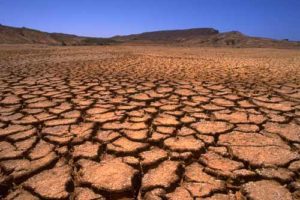From Canada to Central America, the many grandeurs of North America’s diverse topography star in a just-released high-resolution map from NASA’s Shuttle Radar Topography Mission. But a relatively obscure feature, all but hidden in the flat limestone plateau of Mexico’s Yucatan Peninsula, is what emerges as the initial showstopper from the mission’s first released continental data set. The existence of the impact crater known as Chicxulub (Chik-sah-loob) was first proposed in 1980. In the 1990s, satellite data and ground studies allowed it to gain prominence among many scientists as the long sought-after “smoking gun” responsible for the demise of the dinosaurs and more than 70 percent of Earth’s living species 65 million years ago. Now, the Shuttle Radar Topography Mission has provided the most telling visible evidence to date of a 180-kilometer (112-mile) wide, 900-meter (3,000-foot) deep impact crater, the result of a collision with a giant comet or asteroid on one of Earth’s all-time worst days.


 NASA’s Jet Propulsion Laboratory has completed the first comprehensive high-resolution topographic map of Central America, a region where persistent cloud cover had made high-quality satellite imagery difficult to obtain. A mosaic image created from the map, which was collected during the 2000 Shuttle Radar Topography Mission, is available on the JPL Planetary Photojournal at:
NASA’s Jet Propulsion Laboratory has completed the first comprehensive high-resolution topographic map of Central America, a region where persistent cloud cover had made high-quality satellite imagery difficult to obtain. A mosaic image created from the map, which was collected during the 2000 Shuttle Radar Topography Mission, is available on the JPL Planetary Photojournal at: